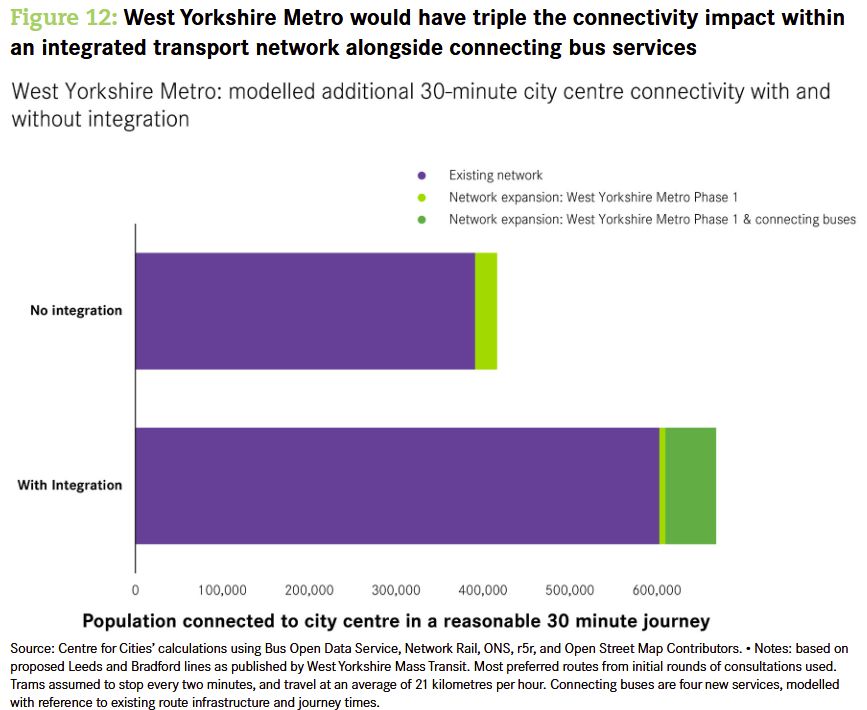
You can read a summary of our work in this blog below:

You can read a summary of our work in this blog below:
This will still require some hard policy choices. But the tools will be on the table from early next year. Next step is to go for it 🚌

This will still require some hard policy choices. But the tools will be on the table from early next year. Next step is to go for it 🚌
So the prize is big. To win it, government must continue to support mayors improving their local transport.


So the prize is big. To win it, government must continue to support mayors improving their local transport.
Impacts will be limited (in the Yorkshire city regions, cut in half), if no changes are made on residents' relative ease of driving.

Impacts will be limited (in the Yorkshire city regions, cut in half), if no changes are made on residents' relative ease of driving.
But again integration complements this - better transport makes these projects more viable, and public land assembly easier.

But again integration complements this - better transport makes these projects more viable, and public land assembly easier.
Connectivity impacts of West Yorkshire Metro Phase 1 plans (on best current information) would be trebled if they happened within an integrated network.
Fixing the fundamentals unlocks these bigger projects.

Connectivity impacts of West Yorkshire Metro Phase 1 plans (on best current information) would be trebled if they happened within an integrated network.
Fixing the fundamentals unlocks these bigger projects.
As this map of Liverpool shows. Increasing frequencies and modal integration together has double the impact of each on its own - see the light blue areas only unlocked with both.

As this map of Liverpool shows. Increasing frequencies and modal integration together has double the impact of each on its own - see the light blue areas only unlocked with both.
For Leeds (and other smaller city regions), filling in bus frequencies is the biggest first step.
For Manchester, it is better use of existing tram and train services, linking to already frequent bus routes


For Leeds (and other smaller city regions), filling in bus frequencies is the biggest first step.
For Manchester, it is better use of existing tram and train services, linking to already frequent bus routes

All by using existing public transport 'better'.
All by using existing public transport 'better'.

Months of staring at (and dreaming about) buses lead to...


Months of staring at (and dreaming about) buses lead to...

For England's 6 largest cities outside London, the policy pipeline will give them unprecedented powers to better connect residents to economic opportunities through integration.

For England's 6 largest cities outside London, the policy pipeline will give them unprecedented powers to better connect residents to economic opportunities through integration.

